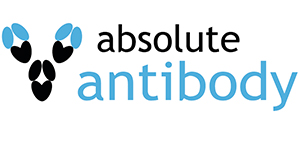Anti-EGFR (7D12)
Anti-EGFR [7D12], Recombinant, IgG1-Fc Fusion, Human
SKU
ABAAb04232-10.159
Packaging Unit
100 μg
Manufacturer
Absolute Antibody
Availability:
loading...
Price is loading...
CloneID: 7D12
Antigen Long Description: The original antibody was generated by immunizing Llama glama with human epidermal A431 carcinoma cells. After cloning variable domains of the heavy-chain antibodies from the peripheral blood and lymph node lymphocytes, a phage-displayed library was constructed. The antibody was isolated by panning on immobilized EGFRs.
Origin Pub PMID: 18413403
Buffer Composition: PBS with 0.02% Proclin 300.
Chimeric Use Statement: This is a chimeric antibody, developed from the original camelid VHH antibody, specifically engineered for enhanced compatibility with existing reagents, assays, and techniques.
Available Custom Conjugation Options: AP, HRP, Fluorescein, APC, PE, Biotin Type A, Biotin Type B, Streptavidin, FluoroProbes 647H, Atto488, APC/Cy7, PE/Cy7
Uniprot Accession No.: P00533
Specificity Statement: The antibody is specific for EGFR. The epitope lies on domain III of the EGFR. The antibody sterically inhibits EGF binding to its receptor.
Application Notes (Clone): The binding affinity of the VHH fragment to the EGFR extracellular region was measured by surface plasmon resonance. The crystal structure of the antibody in complex with EGFR was determined (Schmitz et al. 2013; PMID: 23791944). The specificity of the antibody to human EGFRvIII protein and monkey EGFR was confirmed by ELISA analysis. The antibody could bind to the human EGFR protein on the surface of A431 cells and CHO-K1-human EGFR 1D4 cells and monkey EGFR protein on the surface of 293 and HEK293T cells by FACS analysis. The antibody bound to human EGFRvIII protein on the surface of CHO-K1-EGFRvIII1C6 cells by FACS analysis. The binding affinity of the Fab and IgG fragments to VEGFR-2 was measured by surface plasmon resonance (Kd= 4 nM) (WO2022121928A1). The 99mTc-labeled antibody could block EGFR on A431 cells in in vitro experiments. Mice bearing subcutaneous A431 (EGFR-positive) and R1M (EGFRnegative) xenografts were intravenously injected with the labeled antibody. Image analysis showed high tumor uptake values (4.62 %IA/cm3) in A431 xenografts, whereas the uptake in the negative tumor (R1M) was low (1.49 %IA/cm3). Further, the original antibody showed low liver uptake, and rapid blood clearance (Gainkam et al., 2008; PMID: 18413403). The original format of the antibody could block the binding of EGF to the EGFR and it competed for the binding of cetuximab but not for that of the scFv of matuzumab. The antibody showed low IC50 for EGF binding (8 nM) and low off-rate (2.5 × 10−3/s). A bi-paratopic anti-EGFR nanobody 7D12-9G8 was constructed. It showed good inhibition of EGFR signalling. The bi-paratopic 7D12-9G8 molecule could inhibit A431 cell proliferation (Roovers et al., 2011; PMID: 21520037). The original antibody was fused to a human Fc portion (7D12-hcAb). 7D12-hcAb was able to bind and block EGFR with all tested acquired resistance mutations and—if Fc-engineered—may boost ADCC/Fc-mediated effector functions also in EGFR variants with low affinity to conventional EGFR antibodies or downstream on ras sarcoma gene (RAS) mutated clones (Tintelnot et al., 2019; PMID: 30824613).
Antigen Long Description: The original antibody was generated by immunizing Llama glama with human epidermal A431 carcinoma cells. After cloning variable domains of the heavy-chain antibodies from the peripheral blood and lymph node lymphocytes, a phage-displayed library was constructed. The antibody was isolated by panning on immobilized EGFRs.
Origin Pub PMID: 18413403
Buffer Composition: PBS with 0.02% Proclin 300.
Chimeric Use Statement: This is a chimeric antibody, developed from the original camelid VHH antibody, specifically engineered for enhanced compatibility with existing reagents, assays, and techniques.
Available Custom Conjugation Options: AP, HRP, Fluorescein, APC, PE, Biotin Type A, Biotin Type B, Streptavidin, FluoroProbes 647H, Atto488, APC/Cy7, PE/Cy7
Uniprot Accession No.: P00533
Specificity Statement: The antibody is specific for EGFR. The epitope lies on domain III of the EGFR. The antibody sterically inhibits EGF binding to its receptor.
Application Notes (Clone): The binding affinity of the VHH fragment to the EGFR extracellular region was measured by surface plasmon resonance. The crystal structure of the antibody in complex with EGFR was determined (Schmitz et al. 2013; PMID: 23791944). The specificity of the antibody to human EGFRvIII protein and monkey EGFR was confirmed by ELISA analysis. The antibody could bind to the human EGFR protein on the surface of A431 cells and CHO-K1-human EGFR 1D4 cells and monkey EGFR protein on the surface of 293 and HEK293T cells by FACS analysis. The antibody bound to human EGFRvIII protein on the surface of CHO-K1-EGFRvIII1C6 cells by FACS analysis. The binding affinity of the Fab and IgG fragments to VEGFR-2 was measured by surface plasmon resonance (Kd= 4 nM) (WO2022121928A1). The 99mTc-labeled antibody could block EGFR on A431 cells in in vitro experiments. Mice bearing subcutaneous A431 (EGFR-positive) and R1M (EGFRnegative) xenografts were intravenously injected with the labeled antibody. Image analysis showed high tumor uptake values (4.62 %IA/cm3) in A431 xenografts, whereas the uptake in the negative tumor (R1M) was low (1.49 %IA/cm3). Further, the original antibody showed low liver uptake, and rapid blood clearance (Gainkam et al., 2008; PMID: 18413403). The original format of the antibody could block the binding of EGF to the EGFR and it competed for the binding of cetuximab but not for that of the scFv of matuzumab. The antibody showed low IC50 for EGF binding (8 nM) and low off-rate (2.5 × 10−3/s). A bi-paratopic anti-EGFR nanobody 7D12-9G8 was constructed. It showed good inhibition of EGFR signalling. The bi-paratopic 7D12-9G8 molecule could inhibit A431 cell proliferation (Roovers et al., 2011; PMID: 21520037). The original antibody was fused to a human Fc portion (7D12-hcAb). 7D12-hcAb was able to bind and block EGFR with all tested acquired resistance mutations and—if Fc-engineered—may boost ADCC/Fc-mediated effector functions also in EGFR variants with low affinity to conventional EGFR antibodies or downstream on ras sarcoma gene (RAS) mutated clones (Tintelnot et al., 2019; PMID: 30824613).
| SKU | ABAAb04232-10.159 |
|---|---|
| Manufacturer | Absolute Antibody |
| Manufacturer SKU | Ab04232-10.159 |
| Package Unit | 100 μg |
| Quantity Unit | STK |
| Reactivity | Human, Monkey (Primate) |
| Clonality | Recombinant |
| Application | ELISA, Blocking, Super-Resolution Microscopy, In Vivo Assay, Inhibition, Fluorescence-Activated Cell Sorting (FACS) |
| Isotype | IgG1-Fc Fusion |
| Host | Human |
| Product information (PDF) |
|
| MSDS (PDF) | Download |

 Deutsch
Deutsch







